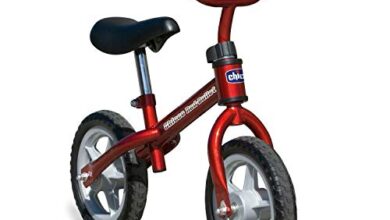What is the javelin throw?

Javelin throwing is a sports discipline that is the product of the evolution of prehistoric hunting and defense practices. Currently, it is considered a highly physically demanding sport, in which the athlete must have dexterity and agility in their movements, so that the launch is as fast, explosive and precise as possible.
The javelin is a type of spear that originated in prehistory, where hunters used it to defend themselves and catch their prey. Likewise, it was the combat weapon of many warriors.
With the passage of time, this structure with a sharp point, fine structure and height equivalent to that of its wearer, began to be used in competitive activities. In this way, the javelin throw arises, practiced in ancient Greece and incorporated as part of the pentathlon of the Olympic games of that time.
Of course, for all this to be possible, the javelin underwent some modifications. The length of its body changed, the hollow structure was built in wood, carbon fiber or aluminum, while a piece of galvanized steel was integrated into the tip. Also, it highlights a rope handle.
On the other hand, in this type of discipline, the athlete uses a special throwing technique and follows a series of rules, stipulated over the years by the sports federations. The objective is for the javelin to go as far as possible within the established parameters.
At first glance, it may seem like a simple sport, but it requires a lot of physical and mental preparation. The individual works a large number of muscle groups and puts psychomotricity into practice, that is, motility and the factors required for said movement to be carried out.

How does the javelin throw originate?
To talk about this sport, it is necessary to contextualize the origin of the instrument with which it is executed. It is the javelin, a linear structure with a light and simple format, which was initially rudimentary, since it was created in the time of the caves as a survival tool.
In fact, throughout history various types of javelin have been distinguished. The first of these is the harpoon used in prehistory, whose tip, when hitting the prey, separated immediately. Likewise, there was the short spear called chuzo, the Bronze Age dart, characterized by its lightness, while the frámea had a length that did not exceed the height of the bearer.
Also, there is the pilum, used by Roman soldiers and the spear, which was a weapon carried by Spanish soldiers in the 16th century. In addition, the javelin was part of the fighting culture of the Nordics and of many peoples, while for the Finns, it represents a symbol that frames the freedom of their people.
Regarding the javelin throw itself, records have been found from the year 708 BC During this time, the Greeks celebrated pentathlons that began with a race in which the athlete had to run 180 meters and, later, there was a section of wrestling, throwing discus and javelin throw. In addition, some archaeological studies indicate that the javelin throw was present in China and Egypt from the year 4000 BC.
From 1908 onwards, the javelin throw was part of the official program of the Olympics. Likewise, there is an international and a European federation, which endorse this sporting practice in tournaments and competitions.
Javelin Throw Basics
The javelin throw, like any sport discipline, has a series of basic fundamentals. Next, we comment on the subject.
Dress
The javelin thrower must wear light garments that fit the body comfortably: shorts or long pants, made of synthetic fabric and close to the skin. In this way, the competitor will enjoy free mobility.
Also, there is the footwear. In this sense, these are not simple running shoes. There are special shoes for this practice, whose sole incorporates 11 studs that provide stability and precision in each of the steps. Thus, the athlete will be able to move on the track to execute the launch.
Javelin
The javelin used in competition can vary in size and thickness depending on the gender of the athlete. If it is a woman, the instrument must measure between 220 and 230 meters, have a diameter of 25 millimeters and weigh no more than 600 grams. For their part, the male athletes will use a javelin with a length of 260 to 270 meters, a thickness of 30 millimeters and a maximum weight of 800 grams.
Regarding the manufacture of the javelin, we have that its body is metallic, the shaft has a sharp point format and the handle area incorporates a rope for greater ergonomics.

competition track
The competition arena for the javelin throw has a corridor with a width of four meters and a length of 36.5 meters. At the end of this section, there is an arch with a radius of eight meters. In addition, the drop area is highlighted, identified with a pair of lines, each five centimeters wide. This sector is characterized by having 29°.
Launching
There are several types of throws in athletics: hammer, discus, weight and javelin.
To make a javelin throw, the technique is as follows: the javelin must be caught from the area of the stoop, that is, where the rope is. Then, with a quick and precise movement, the team is raised over the shoulder and thrown energetically .
It is important that the javelin travels without rotation, as this could result in a penalty. In addition, the athlete can make three attempts and has one minute for the execution. The objective is that the first thing that hits the ground is the point of the javelin. Also, the purpose is to achieve the maximum launch speed to go further. The Olympic javelin throw record for men is 90.57 meters and for women 71.53.
Now that you know more about this discipline, you may be interested in getting started in this interesting ancient sport, practiced since the origins of humanity.



